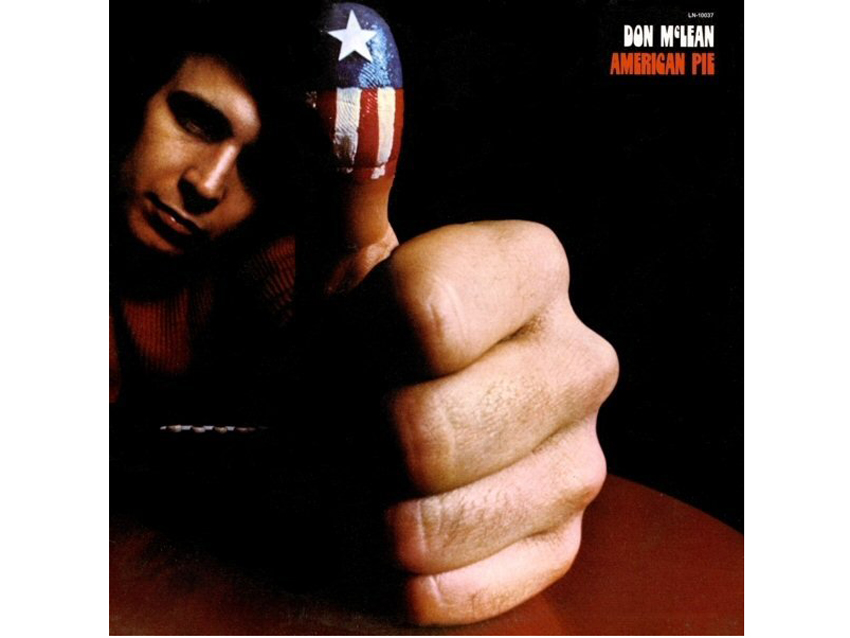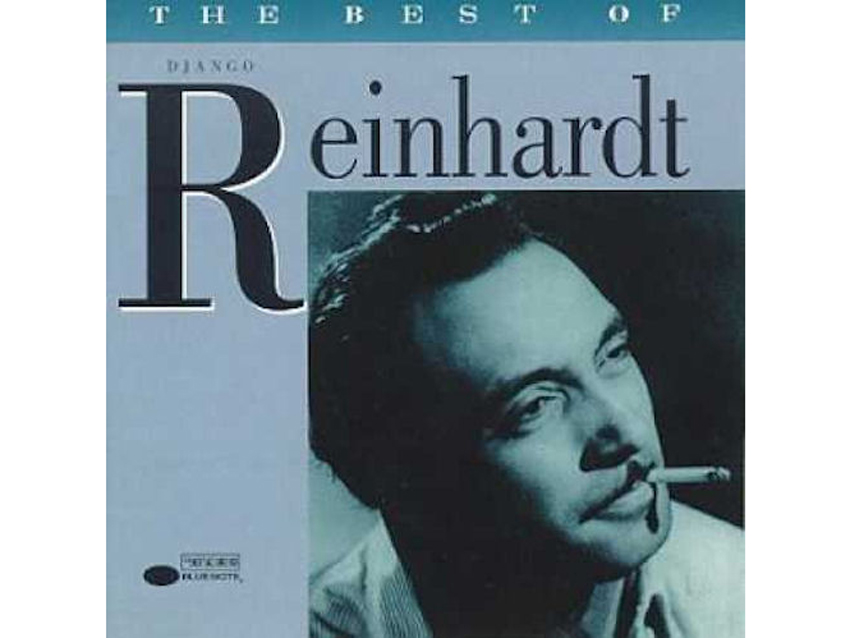
Tommy Emmanuel picks 10 essential acoustic guitar albums
During his lifetime, guitar legend Chet Atkins bestowed the title of Certified Guitar Player (CGP) on only a handful of musicians: John Knowles, Steve Wariner, Jerry Reed and acoustic master Tommy Emmanuel. In choosing his list of 10 essential acoustic guitar albums, Emmanuel tips his hat more than a few times to his late friend and inspiration, as well as one of his fellow honorees.
“You can train a monkey to play fast, but you can’t manufacture soul in music if it isn’t there," Emmanuel says. "When I listen to Chet Atkins, that's all I hear – soul. And when I listen to what he and Jerry Reed did together, it still amazes me, because the music truly lived in their hearts."
Expanding on that point, Emmanuel, who has been celebrated for his astonishing virtuosity, with an approach to playing that that incorporates a wide range of styles, stresses that "music is only about the feeling – virtuosity is secondary. The world is full of guitar players who can play great and do all sorts of impressive things. They have amazing guitars, beautiful microphones and well-shot videos, but there’s no heart to what they’re doing. They get too caught up with trying to be clever, but they miss the boat when it comes to really saying something."
Which translates to, in Emmanuel's words, "a feeling of timelessness. A great album – and a great acoustic guitar record, in particular – is like a wonderful moment in time, and the special thing about it is, you get to go back and re-experience it. These records are like wonderful and powerful photographs, but they haven't faded with age one bit. They're just as strong as the day they were recorded."
On the following pages, Emmanuel discusses his picks for 10 essential acoustic guitar albums. And for dates and ticket information on Tommy Emmanuel's upcoming tour with special guest Martin Taylor (The Colonel & The Governor), click here.

Chet Atkins/Merle Travis - The Atkins-Travis Traveling Show (1974)
“The number one album on this list, the biggest priority and the record you simply have to have, is the Atkins-Travis Traveling Show by Chet Atkins and Merle Travis. If I were washed up on a shore and only had one record to listen to, this would be the one.
“It’s far from perfection, but it’s so full of beautiful arrangements and ideas. One of the things that really draws me in is Chet’s sound. You don’t hear him play steel-string acoustic too often, but when you do, it’s a classic, pure sound that’s so fantastic that you wish you could hear it on every one of his albums.
“Chet’s playing on this album is the benchmark of everything I’ve ever wanted to be as a player. Merle Travis is beautiful on the record, too. It’s got it all.”

Chet Atkins/Jerry Reed - Me And Jerry (1970)
“Every song here has something for you to learn. Jerry Reed’s soloing is spectacular, and Chet goes from nylon-string to Del Vecchio – and he plays electric on a few tracks.
“This is an example of an instrumental album being so diverse and interesting – I'm always hearing something new on it. Nothing is overstated, nothing is understated – it’s just right. The arrangements are elegant, but there’s a spontaneity that feels absolutely authentic; everything is so well placed. That’s the beauty of Chet’s production. The album has his fingerprints all over it.”

Jerry Reed/Chet Atkins - Me and Chet (1972)
“The follow-up is more of a follow-on; it sounds like they just continued with what they were doing, picking up the dialogue. Which isn’t a bad thing at all – what they started on the first album is enough for a career.
Jerry’s Breakdown is a classic, as is Chet’s solo on it. Nobody was playing like that in those days. It’s a cross between a piano player and a banjo player. Throw in a little Fats Waller and Ray Charles, and you’ve got Jerry Reed.
“The other thing I like about these two albums is the engineering. If you listen to them on headphones, everything sounds in its place. You can’t hear any EQ. All you hear are the instruments being played, and they sound totally natural.”

Chet Atkins/Doc Watson - Reflections (1980)
“This is the most perfect meeting of the two players and their styles. Doc is absolutely red-hot on this record, and so is Chet. I think they were both at their peak when they worked together here.
“It’s a great example of Doc’s old-time country flatpicking and Chet’s really sparkly fingerstyle. Again, everything is placed so neat and perfectly placed, but there’s so much feeling, as well.”

Andres Segovia - Andres Segovia: Centenary Celebration (1994)
“Listening to a lot of the early recordings of Segovia can teach you so much about tone and dynamics. In those days, you have to remember that the recordings were done with him sitting in a room with his guitar, and that's about it. He’d be miked up, but he wouldn’t have headphones. So he wouldn’t be aware of the mic and how it was treating his sound; he was just lost in what he was doing.
“There are so many Segovia albums that I could recommend, but the box set has all of the early recordings. The fourth disc features him talking about his life, which is my favorite part of the collection, actually – I just love hearing the sound of his voice.”

John Williams - John Williams Plays Bach (2002)
“It’s truly one of the great representations of a guitar player having the ability and the courage to take on Bach. And boy, does he nail it!
“His sound is just right for this type of music. I wouldn’t use it for anything else, but here it works. John Williams knows every millisecond of this music. He knows when to hold back, when to come forward; he knows when to sustain a note, when to play staccato. Fantastic performances throughout.”

Stephen Bennett - Ten (2002)
“Stephen is from Virginia. In addition to traditional acoustic guitar, he plays harp guitar. I love what he does on this album. The playing is great, everything is beautifully recorded, and Stephen’s compositions are tremendous.
“His style is very pure – just him with the guitar and a mic in front of him. He doesn’t need any more than that. If you listen to this record, it’s another lesson in making melodies and chords work together. There are some great subtleties in his playing, and I love the silence in his left hand – he’s very quiet when he plays.
“There are a couple of songs on this album that, every time I listen to them, I repeat them three or four times – they’re that spectacular.”

Don McLean - American Pie (1971)
“Obviously, it’s a vocal album, but listen to the guitar playing, the arrangements and, more important, the introductions to the songs. They’re so beautiful. Don McLean had that classic ‘60s Martin sound – the sound of a real folk singer.
“I love the songs and the guitar playing – everything about it is fantastic. Everybody knows the big hit title song, and they know Vincent, too, but check out Empty Chairs and Sister Fatima – those are so gorgeous. Listen to the guitar playing and the way Don sets it around his vocals. Brilliant.”

James Taylor - Dad Loves His Work (1981)
“It’s really hard to pick just one James Taylor record, but I really love this one. He has such a distinct guitar-playing style. I think he was experimenting with different handmade guitars in those days. The sound isn’t mind-blowing, but the way he plays and what he does with his parts is pretty special.
“I really like listening to how much space James creates with his accompaniment. He’s an amazing guitar player in that he knows the ins and outs of every little part, what to put in, what to leave out. The strengths of the writing call for just the right approach, and James knows just what to do.”

Django Reinhardt - The Best Of Django Reinhardt (1996)
“Anything by Django that you can get is going to be mind-blowing, so we’ll go with a box set, because you want to get as much of his stuff as you can.
“He’s the one guitar player who, if I want to be inspired, I’ll listen to him and feel completely energized and ready to play. Everything about what he did was so full of class and was so supreme. He had limited use of his fretting hand because of a fire, which makes his musicality even more incredible. You sit there and go, ‘How the hell could he do that?’
“There’s a bounce and an almost comic element to his playing. He’s kind of the father of that style. I still love all of the stuff he did in France during the war, but on some of the later recordings he did in London, the guitar sounds are amazing.”
Joe is a freelance journalist who has, over the past few decades, interviewed hundreds of guitarists for Guitar World, Guitar Player, MusicRadar and Classic Rock. He is also a former editor of Guitar World, contributing writer for Guitar Aficionado and VP of A&R for Island Records. He’s an enthusiastic guitarist, but he’s nowhere near the likes of the people he interviews. Surprisingly, his skills are more suited to the drums. If you need a drummer for your Beatles tribute band, look him up.
